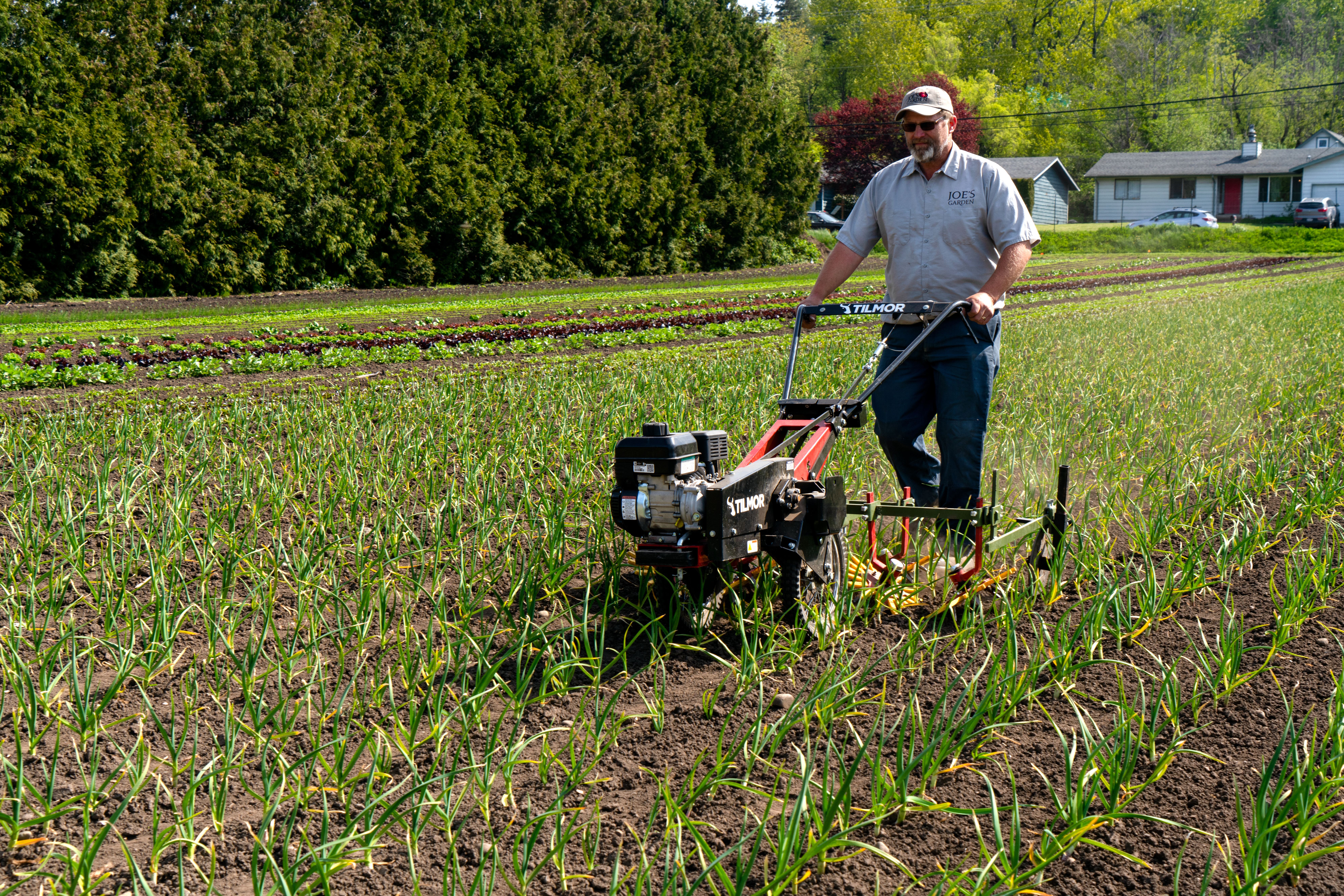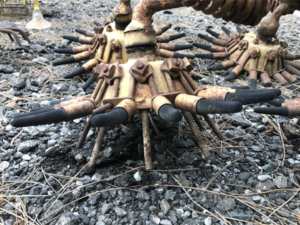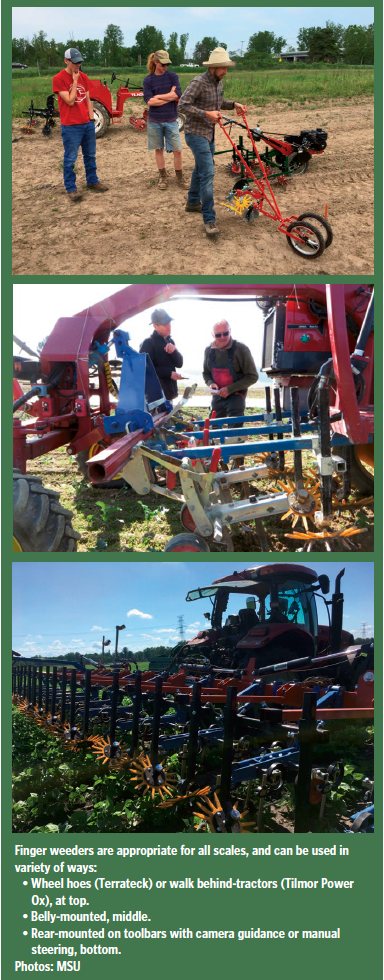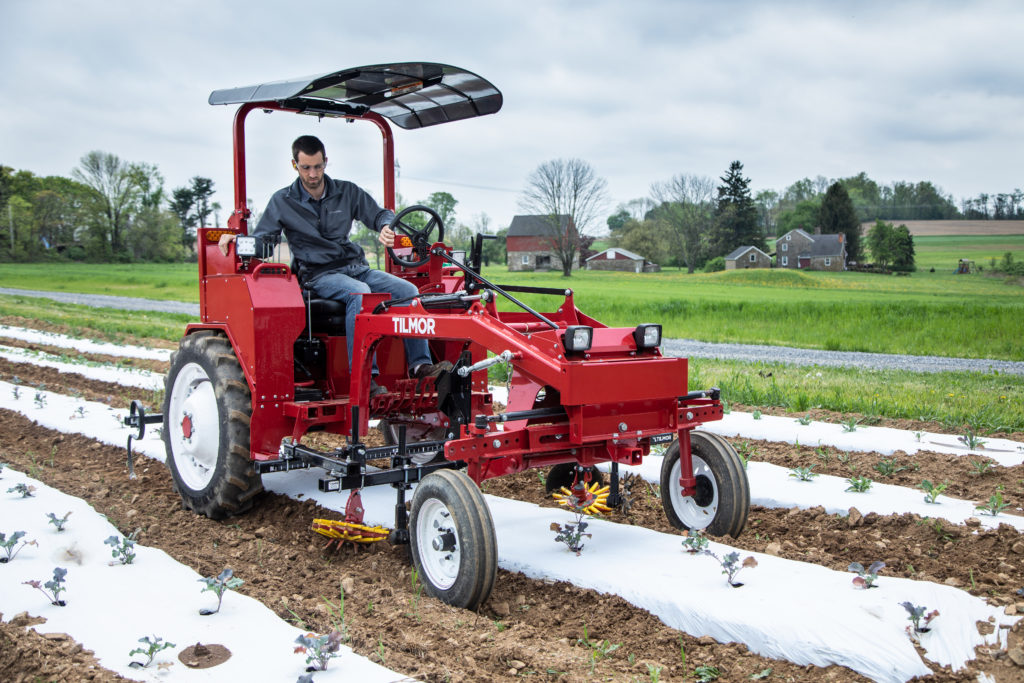
May 21, 2020
Finger weeders provide an affordable option for in-row weeds
With the expansion of organic farming, and shortage of people willing and able to hand-weed, mechanical cultivation tools are becoming increasingly important. Among these, finger weeders have gained attention as one of the most affordable, flexible and forgiving tools for managing “in-row” weeds – those pesky weeds that emerge so close to the crop they can’t be readily controlled with more aggressive and commonly used “between row” tools.
Although finger weeders are extremely useful, their effectiveness depends on using them at the appropriate time, mounting and adjusting them thoughtfully, and understanding their limitations.

What is a finger weeder? The original finger weeders were developed by the Buddingh Weeder Co. in Michigan in the ‘40s and ‘50s, and the basic mechanism hasn’t changed much since: Flexible “fingers” mounted on a circular plate spin through crop rows via ground-driven tines mounted on the underside of the plate (Figure 1).
Originally these fingers were made of rubber tubes mounted on flexible springs that provided sufficient plasticity to minimize crop damage while killing small weeds. Now finger weeders are made mostly out of polyurethane by a range of manufacturers. Finger weeders can be adapted to any scale, ranging from human-powered wheel hoes, to rear-mounted camera guided systems with twelve rows or more (Figure 2). They can also be used in a wide range of crops as long as care is taken to mount, adjust and calibrate carefully to avoid crop damage.

Typical uses. Finger weeders are best suited for managing in-row weeds in large-seeded crops (e.g., sweet corn, snap beans, cucurbits) or transplants (e.g., cole crops) beginning a week or two after crop establishment.
They are used in combination with various between row tools (e.g., sweeps, basket weeders or cutaway disks), and typically preceded by flame weeding or flextine cultivation used before or shortly after crop emergence. In crops with minimal horizontal leaf growth (e.g., leeks), repeated use of flextine cultivators may continue as long as weeds are tiny (cotyledon or white thread), the crop is well-anchored and the soil isn’t too wet. However, for more advanced stages of leafy vegetable crops, or situations where the weeds have more than a leaf or two, finger weeders are more effective at killing in-row weeds without damaging the crop. In our experience, they are also more reliable and forgiving in most situations than other forms of in-row weeders including “torsion weeders.”
Finger weeder characteristics. Finger weeders vary in several ways that affect their performance. Their diameters range from 9 to 16 inches or more, with the optimal choice depending mostly on row spacing.
One rule of thumb is to choose the largest diameter finger that will fit comfortably in your narrowest row spacing. For example, our narrowest row spacing is 15 inches, so we mostly use 13-inch diameter fingers; we have found that small-diameter fingers tend to have shallower drive tines and shorter fingers which can result in disengagement from loose or uneven soil, or limited ability to reach under leaves of larger plants.
Most manufacturers also offer several choices of “durometer” or hardness of fingers depending on the application. In general, harder fingers are more durable, and better able to penetrate crusted soils, but also more likely to damage the crop.
A third important and often overlooked feature of finger weeders is the diameter of the drive tines. For the same finger diameter, smaller drive tine diameters will cause the tips of fingers to move faster and more aggressively at a given tractor speed. This means that if you drive (or walk) slowly you might benefit from a finger weeder with smaller diameter drive tines to increase the speed of the fingertips and their ability to kill weeds. On the other hand, if you have a precise guidance system (e.g., camera guidance) and want to cover a lot of acreage in a hurry, a larger diameter drive tine may be preferred to avoid excessive finger speed and crop injury.

Depth control. As with any cultivation tool, fingers work best when beds are relatively flat and free of obstacles.
Level uniform beds allow more precise seed placement which helps ensure crops get a head start over weeds. Level beds also help ensure that cultivation tools, including finger weeders run at the appropriate depth. Depth control can also be improved by mounting fingers to floating arms of parallel linkages so that they follow soil contours independent of the toolbar to which they are mounted. Several manufacturers offer floating arms with springs to allow adjustment in down-pressure to accommodate different soil conditions. For “belly-mounting” on cultivating tractors (e.g., Allis- Chalmers G), there is often insufficient space to use floating arms, and various parallel linkages may be used instead.
Trying to save money by hard-mounting finger weeders directly to a toolbar is likely to ultimately cost you money in broken shanks, uprooted crops, or missed weeds. I learned this the hard way, and have seen many growers do the same, so take note!
Calibrating a finger weeder. There are several key adjustments that affect finger weeder efficacy and selectivity (ability to kill weeds without killing the crop). These include:
- The distance between tips of fingers.
- The down-pressure and depth of fingers in the soil.
- The angle of penetration.
- Working speed.
Crude adjustments are best accomplished on a flat, paved calibration area with lines marking your row spacing, and spacers to place below gauge wheels for depth adjustment. This can save a lot of time and frustration fiddling with wrenches on uneven ground in the field.
Depending on the mounting system, adjustments in the gauge wheels (for parallel linkages) or down pressure and toolbar height (for floating arms) will affect both the depth of finger penetration and direction of soil movement (in or out of the row). These can be adjusted to influence whether the fingers uproot weeds (by lifting them up and/or flicking them out of the row), or bury them, by pushing soil into the crop row. If you have well-rooted crops and weakly-rooted weeds (try tugging gently on a few of both to test), the general goal will be to uproot weeds. If, on the other hand, you have a crop that is relatively weakly rooted, but taller than neighboring weeds, the finger weeders may be best adjusted to hill.
The final step in calibrating finger weeders is usually to adjust the speed. We start slow and gradually speed up until either all the weeds are killed or we start to see crop damage (and then back off a bit). From there we cross our fingers, spit in a hat, and try to drive straight.
Where to get more information. One of the best resources for basic information on mechanical cultivators of all kinds is the SARE guide “Steel in the Field” which provides an overview of a wide range of tools: https://www.sare.org/Learning-Center/Books/Steel-in-the-Field/Text-Version.
Our program at Michigan State University (with support from SARE) also developed a series of videos on in-row tools, including one on finger weeders that illustrates many of the concepts described in this article at www.youtube.com/ watch?v=4rQQ7iNk2-o.
Through a recent USDA-OREI grant (with Eric Gallandt at the University of Maine) we also continue to test finger weeders, along with many other tools to better understand their uses and to share that information broadly. For more information or questions about finger weeders, feel free to contact me at brainar9@msu.edu.
Top photo: Tilmor offers finger weeders for used on its 520 tractor as well as a walk-behind machine, seen here. Photo: Tilmor









